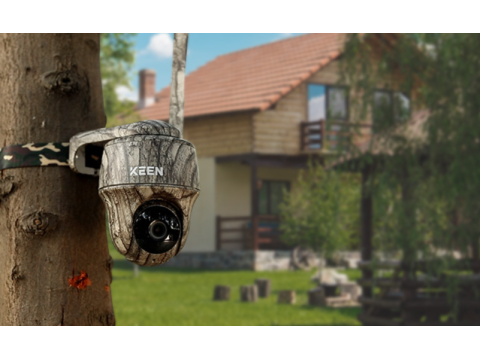Surveillance System for Your Cottage
A cottage surveillance system is either a component of an overall security setup or independently serves to monitor activities in and around your property. These systems can alert owners to unauthorized access and provide peace of mind by ensuring the safety of their property.
Modern systems are versatile, offering features like remote access, motion detection, and video storage. Whether it’s for security or monitoring daily activities, a well-designed system ensures comprehensive coverage.
Key Functions of Cottage Surveillance
- Monitoring indoor and outdoor activities
- Recording and storing video data
- Responding to unauthorized access
- Storing footage on local or cloud servers
- Remote access for live and recorded video
Analog vs. IP Surveillance Systems
Analog Surveillance
Analog systems are widely used due to their affordability and simplicity.
Advantages:
- Lower cost for cameras and accessories.
- Broad compatibility across brands.
- Easier installation and maintenance.
However, scaling an analog system can be costly and challenging. Analog systems are best suited for straightforward setups like basic perimeter monitoring.
IP Surveillance
IP systems leverage modern technology to offer advanced features like wireless connections and high-resolution imagery.
Advantages:
- Easily integrates with smart home systems.
- Wireless installation reduces cabling.
- Offers features like facial recognition and motion alerts.
Considerations:
While IP cameras are feature-rich, they can be pricier and require more setup expertise. Choosing reliable brands is crucial to avoid technical issues like system crashes.
Choosing Cameras for Your Cottage
When selecting security cameras, consider the following factors:
Build and Design
- Indoor cameras: Typically housed in plastic casings.
- Outdoor cameras: Require weatherproof designs with protection levels of IP65 or higher.
Resolution
- For general outdoor monitoring: 700 TVL (analog) or 1-3 MP (IP) cameras suffice.
- For high-priority areas: Opt for 4K cameras for clear, detailed recordings.
Lens Specifications
- Indoor cameras: Wide-angle lenses (90°-120°) for comprehensive room coverage.
- Outdoor cameras: Narrower angles (45°) with longer focus for specific zones.
Light Sensitivity
- Cameras should function effectively in low-light conditions (minimum 0.01 lux).
- Look for features like infrared (IR) LEDs, WDR, and digital noise reduction (DNR) for enhanced clarity.
DVR Specifications for Cottage Surveillance
Your DVR (Digital Video Recorder) or NVR (Network Video Recorder) is the backbone of the system.
Key Features:
- Channels: Choose based on the number of cameras (4, 8, or 16 channels).
- Resolution: Ensure support for Full HD or higher.
- Compression: Modern codecs like H.264 ensure efficient storage.
- Storage: Use surveillance-grade HDDs (e.g., Seagate Barracuda or WD Purple).
Connectivity:
- Ethernet Ports (RJ-45): For internet and cloud access.
- RS-485 Ports: For controlling PTZ (pan-tilt-zoom) cameras.
Installation Tips for Cottage Surveillance
Indoor Cameras:
- Focus on entrances, hallways, and staircases.
- Ensure cameras are mounted out of reach to prevent tampering.
Outdoor Cameras:
- Cover perimeter zones like fences, driveways, and garage doors.
- Mount cameras at a height of 8-10 feet to deter vandalism.
Remote Access
For remote monitoring:
- Use a DVR with P2P technology or a cloud-based service.
- Ensure a stable internet connection for live and archived video access.
Conclusion
Whether for security or convenience, a well-planned cottage surveillance system offers peace of mind. Choose analog systems for simplicity and cost savings or IP systems for advanced features and flexibility. Proper camera placement and regular maintenance ensure long-term reliability, making your cottage a safer place to live and visit.

